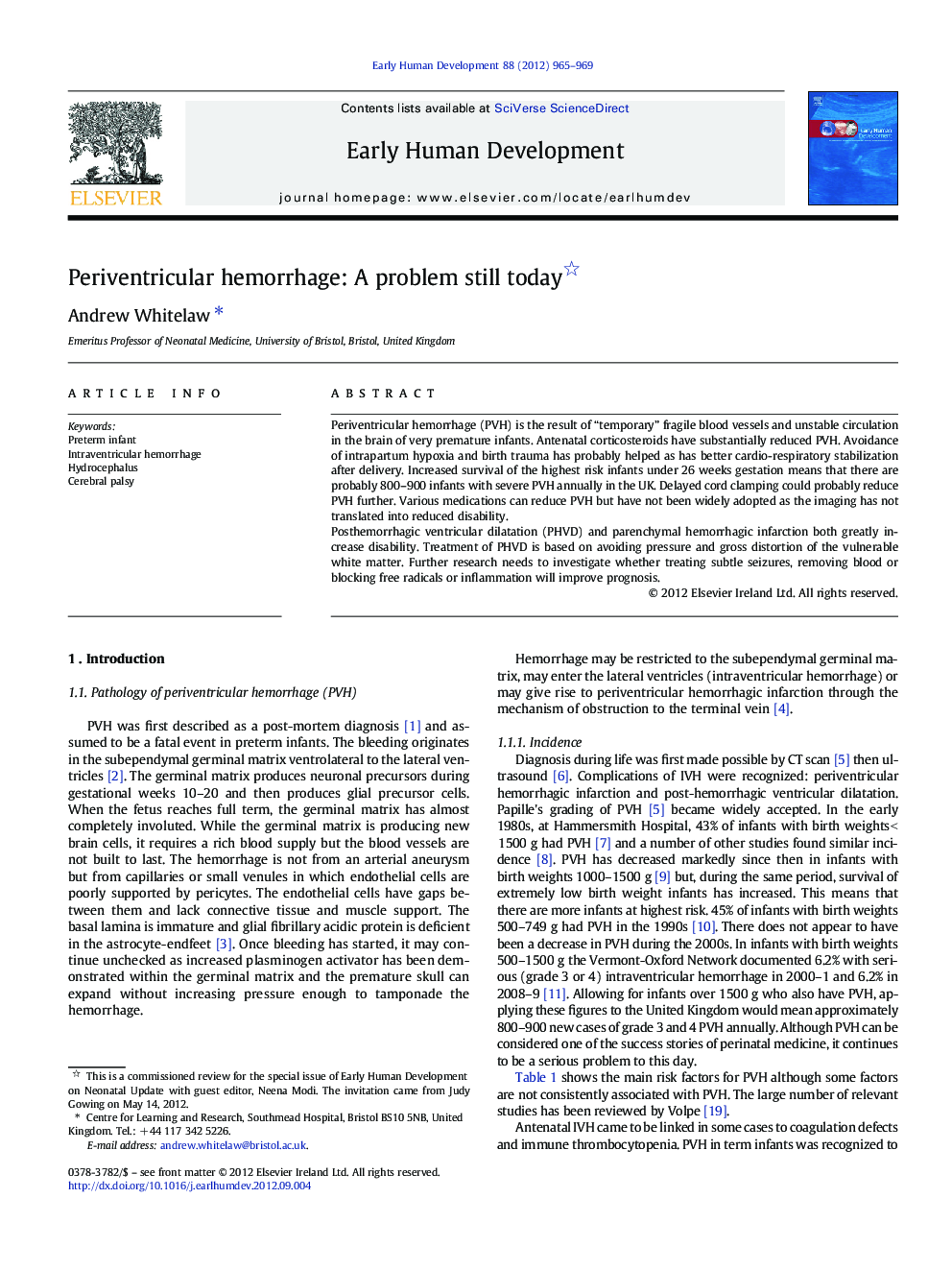| Article ID | Journal | Published Year | Pages | File Type |
|---|---|---|---|---|
| 6172357 | Early Human Development | 2012 | 5 Pages |
Periventricular hemorrhage (PVH) is the result of “temporary” fragile blood vessels and unstable circulation in the brain of very premature infants. Antenatal corticosteroids have substantially reduced PVH. Avoidance of intrapartum hypoxia and birth trauma has probably helped as has better cardio-respiratory stabilization after delivery. Increased survival of the highest risk infants under 26Â weeks gestation means that there are probably 800-900 infants with severe PVH annually in the UK. Delayed cord clamping could probably reduce PVH further. Various medications can reduce PVH but have not been widely adopted as the imaging has not translated into reduced disability.Posthemorrhagic ventricular dilatation (PHVD) and parenchymal hemorrhagic infarction both greatly increase disability. Treatment of PHVD is based on avoiding pressure and gross distortion of the vulnerable white matter. Further research needs to investigate whether treating subtle seizures, removing blood or blocking free radicals or inflammation will improve prognosis.
